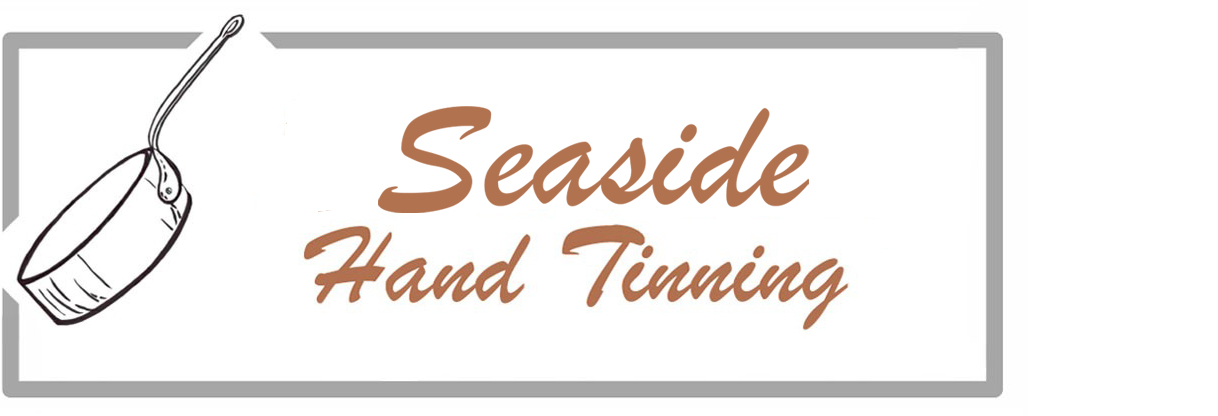Frequently Asked Questions about Tin-Lined Copper Cookware
 Why copper cookware? No cookware material conducts heat like copper – it has nearly twice the thermal conductivity of aluminum, 5 times more conductivity than cast iron, and 25 times more conductivity than stainless steel! Lining choices are typically stainless steel or tin. However, tin is much more thermally efficient than stainless steel and, unlike stainless, is a highly non-stick cooking surface. Food lifts off pure tin as easily as it does from well-seasoned cast iron, but tin does not require seasoning. Serious cooks love tin-lined copper cookware for these qualities.
Why copper cookware? No cookware material conducts heat like copper – it has nearly twice the thermal conductivity of aluminum, 5 times more conductivity than cast iron, and 25 times more conductivity than stainless steel! Lining choices are typically stainless steel or tin. However, tin is much more thermally efficient than stainless steel and, unlike stainless, is a highly non-stick cooking surface. Food lifts off pure tin as easily as it does from well-seasoned cast iron, but tin does not require seasoning. Serious cooks love tin-lined copper cookware for these qualities.
Can tin-lined cookware be treated the same as other cookware? Tin-lined copper is ideally suited for lower temperature cooking applications such as sauce-making, roasting, light frying, and cooking in liquids. Since tin melts at approximately 450° F, searing and even high-temperature frying can be problematic. Pre-heating a pan and then getting distracted is a good way to melt the lining. Fortunately, copper cookware is extremely forgiving and a new application of tin will completely restore your copper! Avoid the use of metal cooking utensils that may scratch the tin lining.
What is the difference between a hand-wiped and an electroplated tin surface? The application of hand-wiped tin is a centuries old technique used to restore the lining of copper cookware and results in a thicker coating of tin than electroplating. Hand-wiped tinning requires heating the cookware to a temperature high enough to melt the tin, covering the entire cooking surface with food grade tin, and then wiping any excess tin away. The new tin thoroughly coats the copper, but will not obscure tooling, wear, or other surface marks inside the cookware. Wipe marks will be visible and are part of the charm of a hand-done piece. These marks in no way impair the nonstick and other performance properties of the pan.
 Will my tin lining always stay shiny? The tin lining will oxidize very slowly with age and turn darker with use. This is normal and completely food safe. If desired, the oxidation can sometimes be lightened with an application of Wright’s Silver Cream followed by a thorough washing with soap and water.
Will my tin lining always stay shiny? The tin lining will oxidize very slowly with age and turn darker with use. This is normal and completely food safe. If desired, the oxidation can sometimes be lightened with an application of Wright’s Silver Cream followed by a thorough washing with soap and water.
When should my cookware be retinned? Cookware that’s in regular use should be retinned when an area of copper roughly the size of a quarter is visible. Cookware that hasn’t been used in a long time will benefit from retinning to remove old polymerized food oils, which can impart off-putting flavors.
This old pan was given a good scrubbing and there’s no copper showing. Is it safe to use?
Let’s purposely melt the tin, wipe the inside of the pan with non-flammable batting, and check the results…
Thoughts to Ponder: The heat unbinds the silvery tin from the dark oxidation, old polymerized food oils, and other contaminants (a.k.a. “mystery stuff”). Yes, the pan was safe to cook in, but do you really want your food in contact with all that stuff that’s definitely not tin or from your kitchen?
How do I clean my copper? Wright’s Copper Cream is recommended to gently remove tarnish from copper cookware. Unlike Barkeeper’s Friend and other cleaning agents, Wright’s leaves behind a protective coating that delays tarnish from reforming. Polishing with food-safe Flitz paste will add shine and a durable anti-tarnish protective coating.



You must be logged in to post a comment.